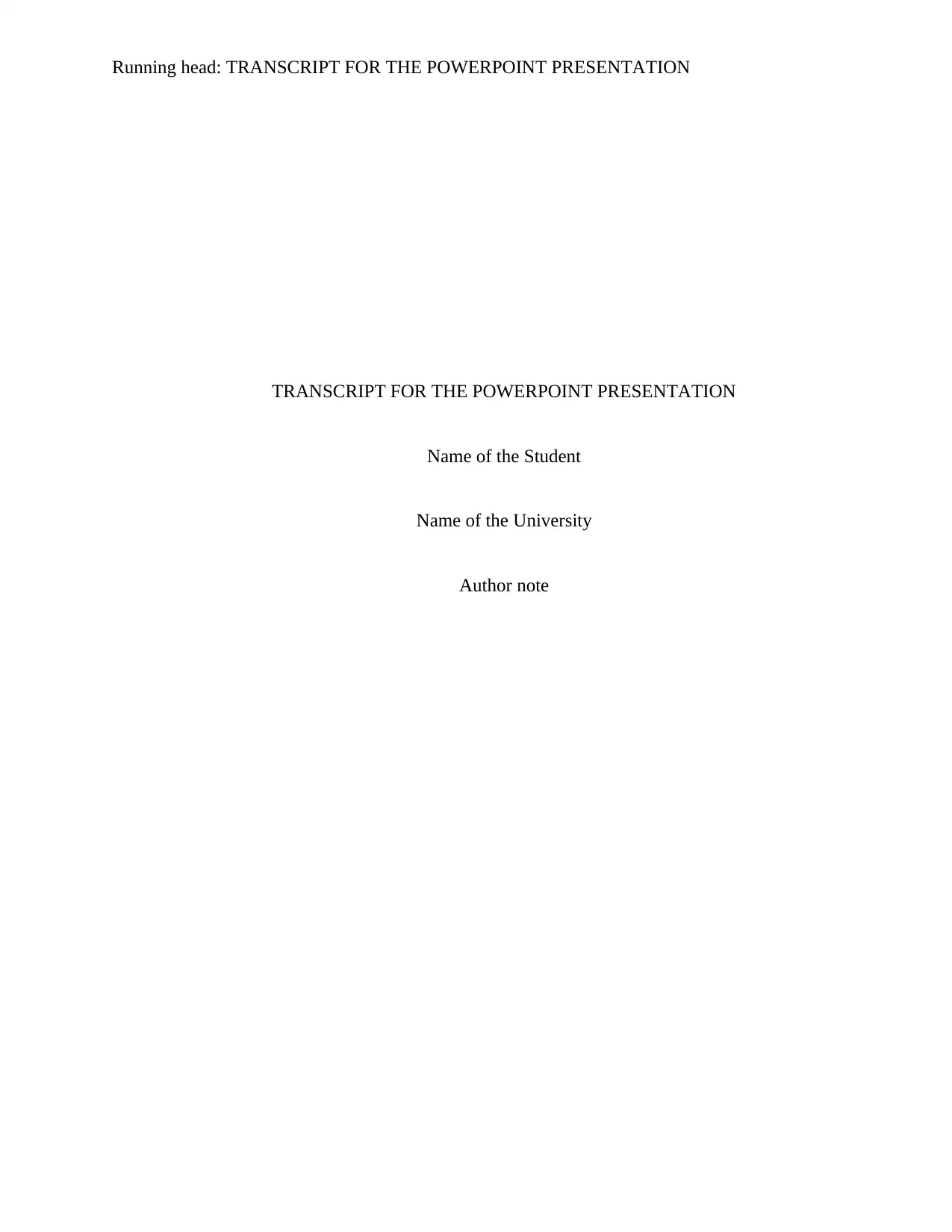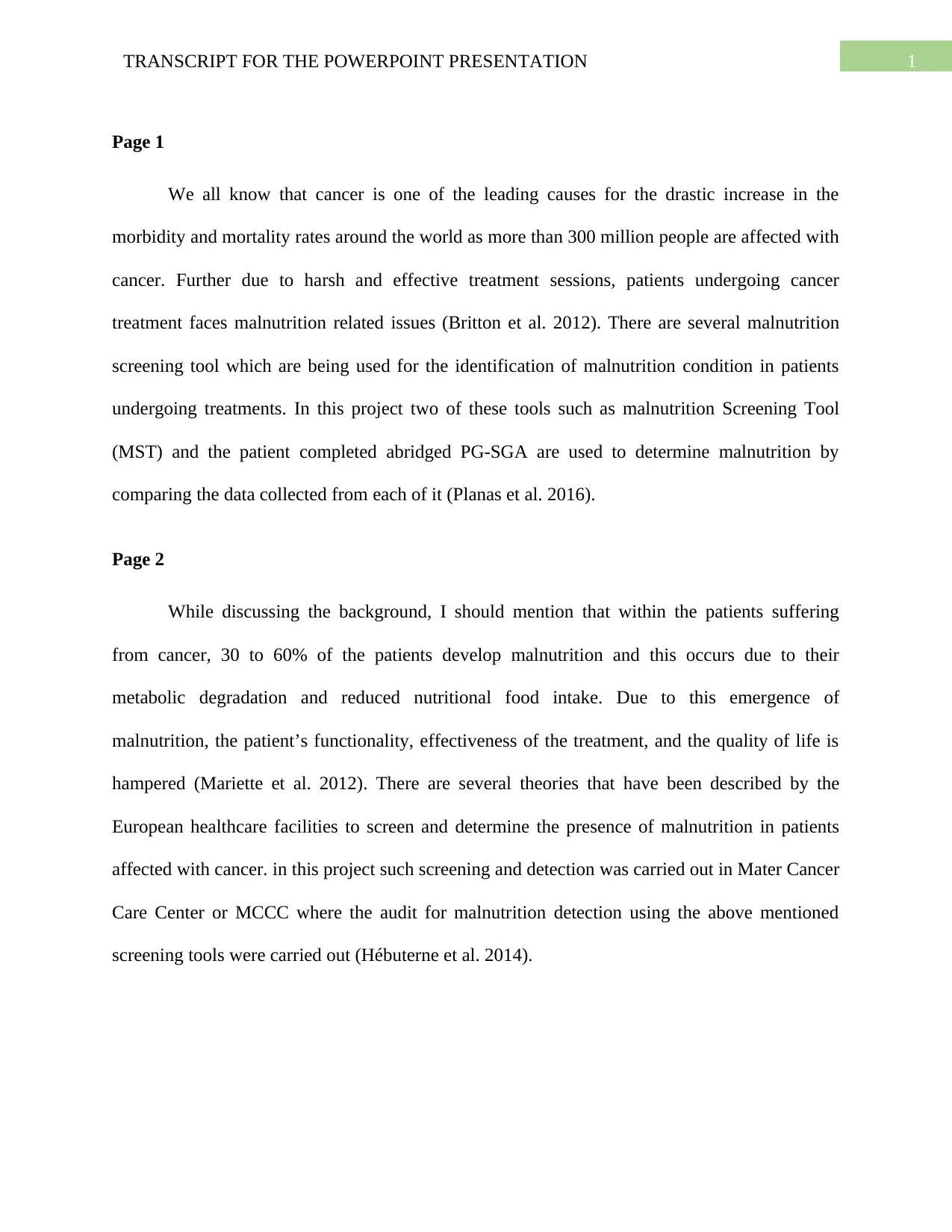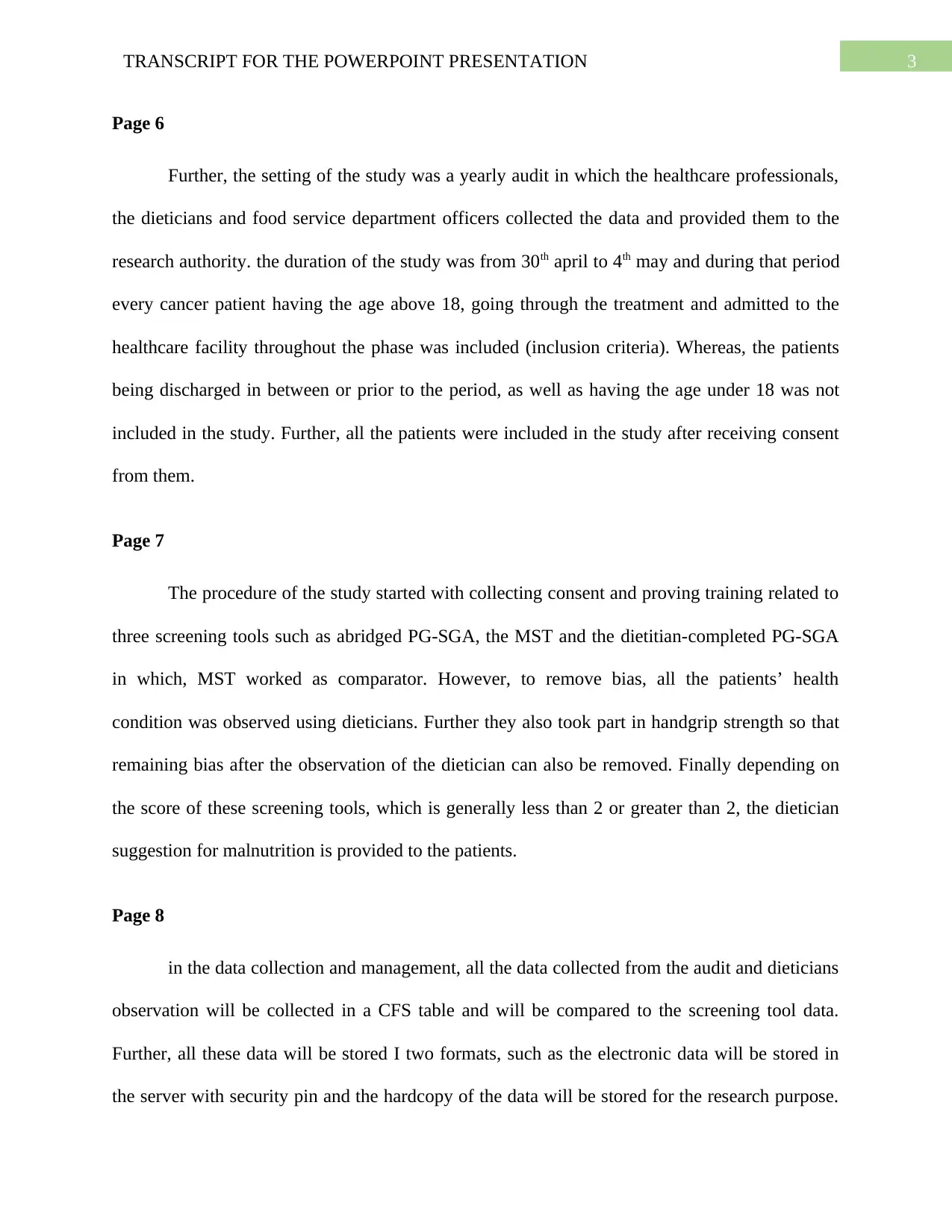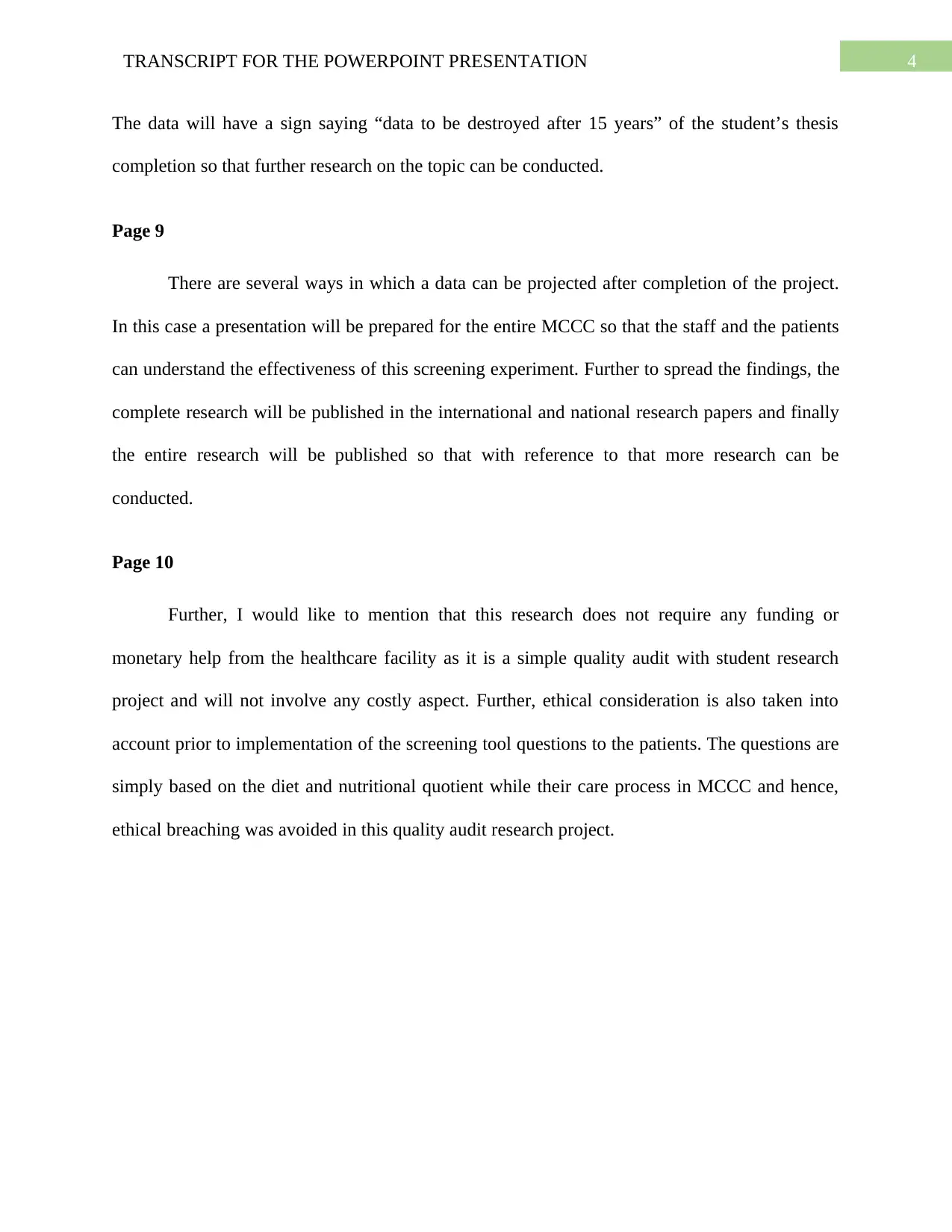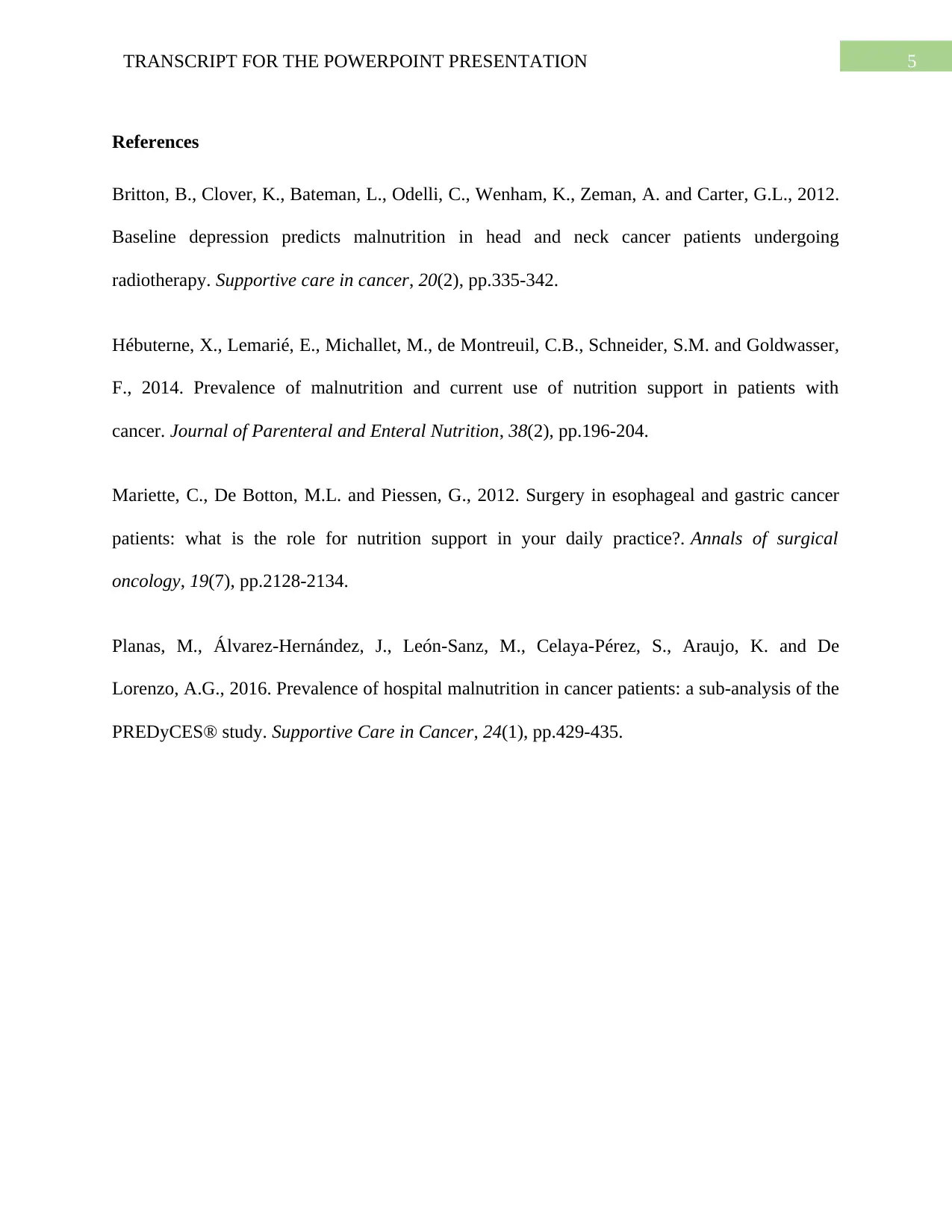This transcript discusses a cross-sectional study conducted at Mater Cancer Care Center to determine the effectiveness of malnutrition screening tools for cancer patients. The study used two screening tools, the Malnutrition Screening Tool (MST) and the patient-completed abridged PG-SGA, to identify malnutrition in patients undergoing cancer treatment. The study aimed to determine the number of patients suffering from cancer and malnutrition simultaneously and determining the competency level between the screening tools while determining the malnutrition affected people. The study found that 30 to 60% of cancer patients develop malnutrition, and the screening tools were effective in identifying malnutrition in patients. The findings were published in national and international research papers.
![[object Object]](/_next/static/media/star-bottom.7253800d.svg)
![[object Object]](/_next/static/media/star-bottom.7253800d.svg)
